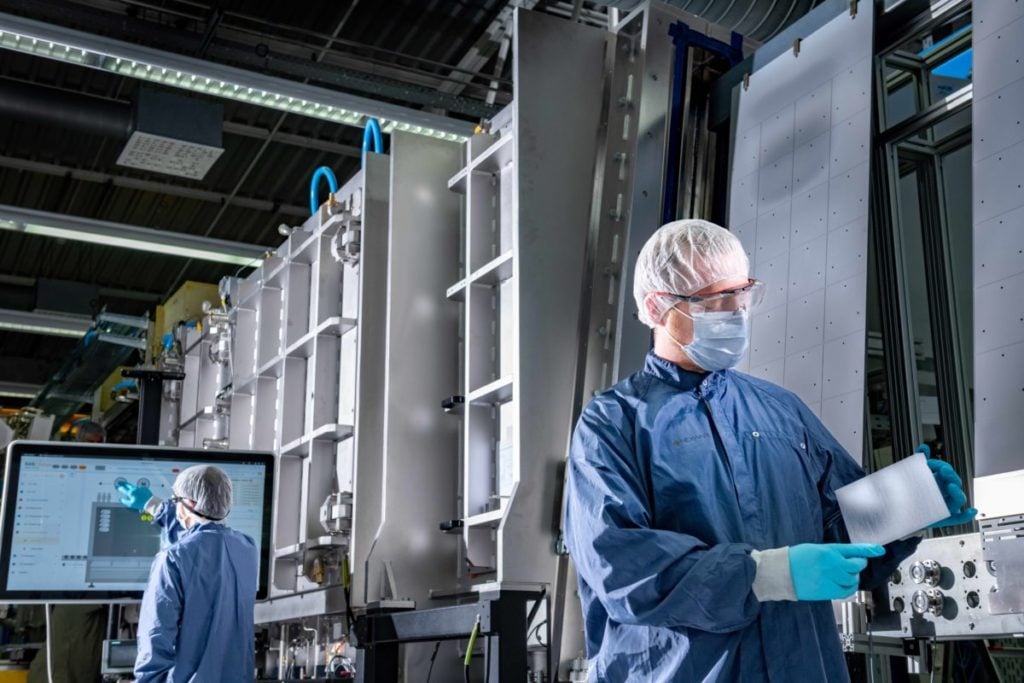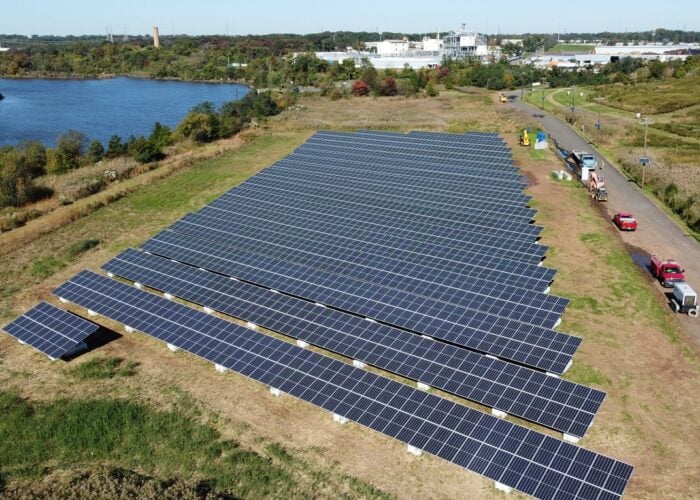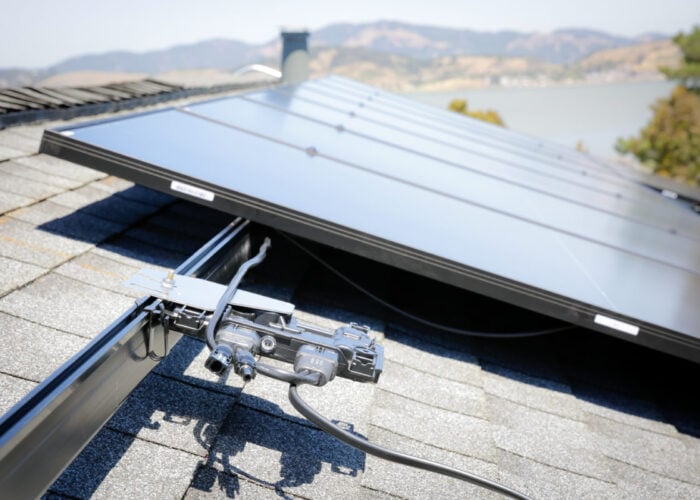
German-based solar wafer producer NexWafe has expanded to the US and is exploring the possibility of building an initial development capacity of 6GW of solar wafers.
The operations in North America will use the company’s EpiNex production technology, which aims to simplify polysilicon production and reduce energy consumption and production time. The process will be used at its production facility in Germany, which is currently under construction and will have an annual capacity of 250MW.
Unlock unlimited access for 12 whole months of distinctive global analysis
Photovoltaics International is now included.
- Regular insight and analysis of the industry’s biggest developments
- In-depth interviews with the industry’s leading figures
- Unlimited digital access to the PV Tech Power journal catalogue
- Unlimited digital access to the Photovoltaics International journal catalogue
- Access to more than 1,000 technical papers
- Discounts on Solar Media’s portfolio of events, in-person and virtual
Or continue reading this article for free
NexWafe has not yet selected a location, and is currently assessing potential manufacturing locations, along with securing strategic partnerships and offtake agreements for domestic wafer supply.
At the helm of the US subsidiary will be Jonathan Pickering, who was previously president of Chinese solar manufacturer JA Solar Americas and former vice president of equipment supplier company Applied Materials.
“Multiple top-tier solar companies have committed to advanced PV cell and module manufacturing at a multi-gigawatt scale across the US. But now we see a significant bottleneck in the supply chain for a domestic source of silicon wafers,” said Pickering, VP of business development for North America at NexWafe.
Since the Inflation Reduction Act was introduced in 2022, new capacity announcements or expansions have been flourishing in the US. However, most of these came from modules and cells with not as much from higher upstream – polysilicon, ingots and wafers – which could bring a disparity between available domestic capacity across the entire supply chain.
In a guest blog for PV Tech, Martin Meyers, principal consultant at industry advisory company Clean Energy Associates (CEA) explained how the disparity between domestic module capacity and the rest of the supply chain would force many module manufacturers to rely on imported cells.
“Our breakthrough EpiNex direct ‘gas-to-wafer’ manufacturing process targets this exact opportunity. We are developing a gigawatt-scale facility to manufacture high-performance. American-made, thin silicon wafers to serve our US customers, and we can do so while achieving a 60% reduction in the carbon footprint compared to today’s technology,” added Pickering.
| PV Tech publisher Solar Media will be organising the third edition of Large Scale Solar USA Summit in Austin, Texas 1-2 May. With the Inflation Reduction Act (IRA) targeting US$369 billion for clean energy and US$40 billion for manufacturing, the solar industry has never been brighter. The IRA, securing financing for future projects or supply chain bottlenecks will be among the discussions at this year’s event. More information, including how to attend, can be read here. |







